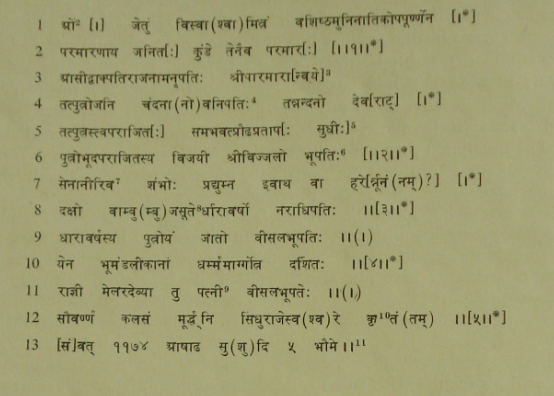| |
North
Indian Inscriptions |
| |
|
|
|
INSCRIPTION OF THE PARAMARAS OF JALOR
TEXT
[1]
[Metres : Verses 1 and 3 Āryā ; v. 2 Śārdūlavikrīḍita ; vv. 4-5 Anushṭubh].

From ink-impressions.
[2] Expressed by a symbol.
[3] प is changed to पा for the sake of the metre.
[4] The sandhi is not made here, as required by rules.
[5] Reu : स्वयं(यम्)
[6] The visarga shows three dots here.
[7] After the third letter in this line there is a vacant space for two letters. The figures of speech in this verse leave no doubt to conclude that Dhārāvarsha was the son of Vijjala.
[8] Daksha was born of one who had himself his birth in a lotus, i.e., Brahmā.
[9] Probably some other letter was originally formed here. The words राज्ञी and पत्नी are to be changed to the third case, to be connected with कृतम् in the next line.
[10] The formation of this letters is rather peculiar.
[11] Some traces below show that at least one more line was there, originally, probably giving the name of the poet and the engraver.
|
\D7
![]()
|








